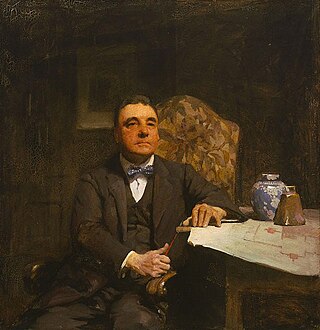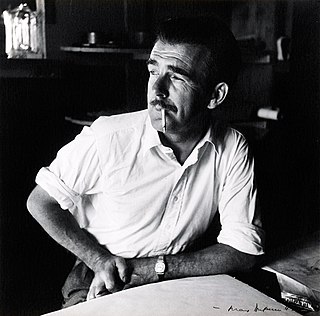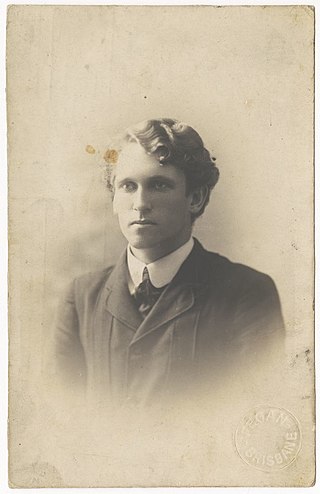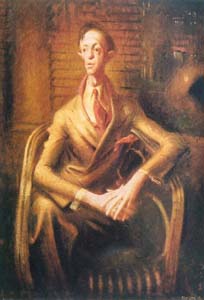
The Archibald Prize is an Australian portraiture art prize for painting, generally seen as the most prestigious portrait prize in Australia. It was first awarded in 1921 after the receipt of a bequest from J. F. Archibald, the editor of The Bulletin who died in 1919. It is administered by the trustees of the Art Gallery of New South Wales and awarded for "the best portrait, preferentially of some man or woman distinguished in Art, Letters, Science or Politics, painted by an artist resident in Australia during the twelve months preceding the date fixed by the trustees for sending in the pictures". The Archibald Prize has been awarded annually since 1921 and since July 2015 the prize has been AU$100,000.

Brett Whiteley AO was an Australian artist. He is represented in the collections of all the large Australian galleries, and was twice winner of the Archibald, Wynne and Sulman prizes. He held many exhibitions, and lived and painted in Australia as well as Italy, England, Fiji and the United States.

Sir William Dobell was an Australian portrait and landscape artist of the 20th century. Dobell won the Archibald Prize, Australia's premier award for portrait artists on three occasions. The Dobell Prize is named in his honour.
Craig Ruddy was an Australian artist, known for winning the Archibald Prize in 2004 with his portrait of Aboriginal actor David Gulpilil.

Nora Heysen was an Australian artist, the first woman to win the prestigious Archibald Prize in 1938 for portraiture and the first Australian woman appointed as an official war artist.
William Edwin Pidgeon, aka Bill Pidgeon and Wep, (1909–1981) was an Australian painter who won the Archibald Prize three times. After his death, cartoonist and journalist Les Tanner described him: "He was everything from serious draftsman, brilliant cartoonist, social observer, splittingly funny illustrator to multiple Archibald prizewinner.
Ray Austin Crooke was an Australian artist known for his landscapes. He won the Archibald Prize in 1969 with a portrait of George Johnston.

Lloyd Frederic Rees was an Australian landscape painter who twice won the Wynne Prize for his landscape paintings.
Guy Wilkie Warren is an Australian painter who won the Archibald Prize in 1985 with Flugelman with Wingman. His works have also been exhibited as finalists in the Dobell Prize and he received the Trustees Watercolour Award at the Wynne Prize in 1980. He turned 100 in 2021.

Marcus Wills is an Australian painter, winner of the 2006 Archibald Prize and finalist in many other art competitions.

Ben Quilty is an Australian artist and social commentator, who has won a series of painting prizes: the 2014 Prudential Eye Award, 2011 Archibald Prize, and 2009 Doug Moran National Portrait Prize. He has been described as one of Australia's most famous living artists.

Paul Ashton Delprat is an Australian artist and the Principal of The Julian Ashton Art School, Sydney's oldest continuous fine art school. His art is held in the National Gallery of Australia and in state, municipal and university galleries as well as numerous private collections.
Wendy Susan Whiteley is best known as the former wife of the Australian artist Brett Whiteley, and as the mother of their daughter, actress Arkie Whiteley (1964–2001). She has become a notable cultural figure, particularly since her ex-husband's death in 1992. She posed for Brett many times. Although they divorced three years before he died, she has control of Brett Whiteley's estate including the copyright to his works. She played an important role in the establishment of the Brett Whiteley Studio in Surry Hills, New South Wales which is now owned and managed as an art museum by the Art Gallery of New South Wales.
Oliver Watts is an Australian artist, lecturer and theorist.
Andrew John Sibley was an English-born Australian artist. Sibley has been the subject of three books and is commonly listed in histories and encyclopedias of Australian art as a significant figurative painter of the mid and late 20th century.

Steve Lopes is an Australian figurative artist. He has exhibited in 40 solo shows across Australia, London and Hong Kong. His work is collected in the National Gallery of Australia, Federal Parliament House Art Collection Canberra, State Library of NSW, Bundanon Collection, Gallipoli Memorial Club, Time Warner Collection New York, Rolls-Royce London and public galleries and private collections around the world.
Vincent Fantauzzo, is a Melbourne-based Australian portrait artist known for his award winning portraits of Heath Ledger, Brandon Walters, Matt Moran, Emma Hack, Baz Luhrmann, Asher Keddie and his son Luca. He has won the Doug Moran National Portrait Prize twice, the Archibald Packing Room Prize, and the Archibald People's Choice Award four times.

Mr Joshua Smith, also known as Portrait of an Artist (Joshua Smith), is a 1943 painting by Australian artist William Dobell. The painting is a portrait of Joshua Smith, an artist and friend of Dobell. The painting was awarded the Archibald Prize in 1943. The painting took a modernist approach to portraiture; a break with the realism favoured to that date by Archibald Prize entrants.
[I was] trying to create something, instead of copying something. To me, a sincere artist is not one who makes a faithful attempt to put on canvas what is in front of him, but one who tries to create something which is living in itself, regardless of its subject. So long as people expect paintings to be simply coloured photographs they get no individuality and in the case of portraits, no characterisation. The real artist is striving to depict his subject’s character and to stress the caricature, but at least it is art which is alive.

Brett Whiteley House is a heritage-listed arts and crafts studio and residence in Lavender Bay, North Sydney Council, New South Wales, Australia. It was built during 1905 by Henry Green. It is also known as Brett Whiteley House and Visual Curtilage and Lochgyle. It was added to the New South Wales State Heritage Register on 23 March 2018.
Mitch Cairns is an Australian artist and cartoonist. In 2017, he won the Archibald Prize. His work has been collected by many prominent Australian institutions.









